The Characterization of Deformable Photovoltaic Modules †
Abstract
:1. Introduction
2. Methodology
2.1. Measuring VOC and ISC for the Whole System
2.2. Modeling Using a Single PV Module
3. Measurement
3.1. Solar Irradiation Measurement
3.2. Measuring the VOC and ISC of the Whole System
4. Results and Discussion
4.1. Modeling VOC and ISC with PV Temperature
4.2. Modeling VOC and ISC with Solar Irradiation
4.3. Modeling VOC and ISC with the Module Tilt Angle
4.4. Modeling VOC and ISC with Azimuth Angle
4.5. Modeling VOC and ISC with Time
5. Conclusions
Author Contributions
Funding
Institutional Review Board Statement
Informed Consent Statement
Data Availability Statement
Acknowledgments
Conflicts of Interest
References
- Abdeen, M.O. Renewable energy resources for electricity generation in Sudan. Renew. Sustain. Energy Rev. 2007, 11, 1481–1497. [Google Scholar] [CrossRef]
- Shaopeng, G.; Qibin, L.; Jie, S.; Hongguang, J. A review on the utilization of hybrid renewable energy. Renew. Sustain. Energy Rev. 2018, 91, 1121–1147. [Google Scholar] [CrossRef]
- Qi, L.; Zhang, Y. Effects of solar photovoltaic technology on the environment in China. Environ. Sci. Pollut. Res. 2017, 24, 22133–22142. [Google Scholar] [CrossRef] [PubMed]
- Branker, K.; Pathak, M.J.M.; Pearce, J.M. A review of solar photovoltaic levelized cost of electricity. Renew. Sustain. Energy Rev. 2011, 15, 4470–4482. [Google Scholar] [CrossRef]
- Fesharaki, V.J.; Dehghani, M.; Fesharaki, J.J.; Tavasoli, H. The effect of temperature on photovoltaic cell efficiency. In Proceedings of the 1st International Conference on Emerging Trends in Energy Conservation–ETEC, Tehran, Iran, 20–21 November 2011; pp. 20–21. [Google Scholar]
- Verma, S.; Mohapatra, S.; Chowdhury, S.; Dwivedi, G. Cooling techniques of the PV module: A review. Mater. Today Proc. 2021, 38, 253–258. [Google Scholar] [CrossRef]
- Sargunanathan, S.; Elango, A.; Tharves Mohideen, S. Performance enhancement of solar photovoltaic cells using effective cooling methods: A review. Renew. Sustain. Energy Rev. 2016, 64, 382–393. [Google Scholar] [CrossRef]
- Ibrahim, H.; Anani, N. Variations of PV module parameters with irradiance and temperature. Energy Procedia 2017, 134, 276–285. [Google Scholar] [CrossRef]
- Kazem, H.A.; Chaichan, M.T. Effect of environmental variables on photovoltaic performance-based on experimental studies. Int. J. Civ. Mech. Energy Sci. (IJCMES) 2016, 2, 1–8. [Google Scholar]
- Goverde, H.; Goossens, D.; Govaerts, J.; Dubey, V.; Catthoor, F.; Baert, K.; Poortmans, J.; Driesen, J. Spatial and temporal analysis of wind effects on PV module temperature and performance. Sustain. Energy Technol. Assess. 2015, 11, 36–41. [Google Scholar] [CrossRef]
- El-Sebaii, A.A.; Al-Hazmi, F.S.; Al-Ghamdi, A.A.; Yaghmour, S.J. Global, direct and diffuse solar radiation on horizontal and tilted surfaces in Jeddah, Saudi Arabia. Appl. Energy 2010, 87, 568–576. [Google Scholar] [CrossRef]
- N’Tsoukpoe, K.E. Effect of orientation and tilt angles of solar collectors on their performance: Analysis of the relevance of general recommendations in the West and Central African context. Sci. Afr. 2022, 15, e01069. [Google Scholar] [CrossRef]
- Sharma, M.K.; Kumar, D.; Dhundhara, S.; Gaur, D.; Verma, Y.P. Optimal Tilt Angle Determination for PV Panels Using Real Time Data Acquisition. Glob. Chall. 2020, 4, 1900109. [Google Scholar] [CrossRef] [PubMed]
- Suthar, M.; Singh, G.K.; Saini, R.P. Comparison of Mathematical Models of Photo-Voltaic (PV) Module and Effect of Various Parameters on Its Performance. In Proceedings of the 2013 International Conference on Energy Efficient Technologies for Sustainability (ICEETS), Tamilnadu, India, 10–12 April 2013; pp. 1354–1359. [Google Scholar] [CrossRef]
- Nguyen, X.H.; Nguyen, M.P. Mathematical modeling of photovoltaic cell/module/arrays with tags in Matlab/Simulink. Environ. Syst. Res. 2015, 4, 1–13. [Google Scholar] [CrossRef]
- Jafarkazemi, F.; Saadabadi, S.A. Optimum tilt angle and orientation of solar surfaces in Abu Dhabi, UAE. Renew. Energy 2013, 56, 44–49. [Google Scholar] [CrossRef]

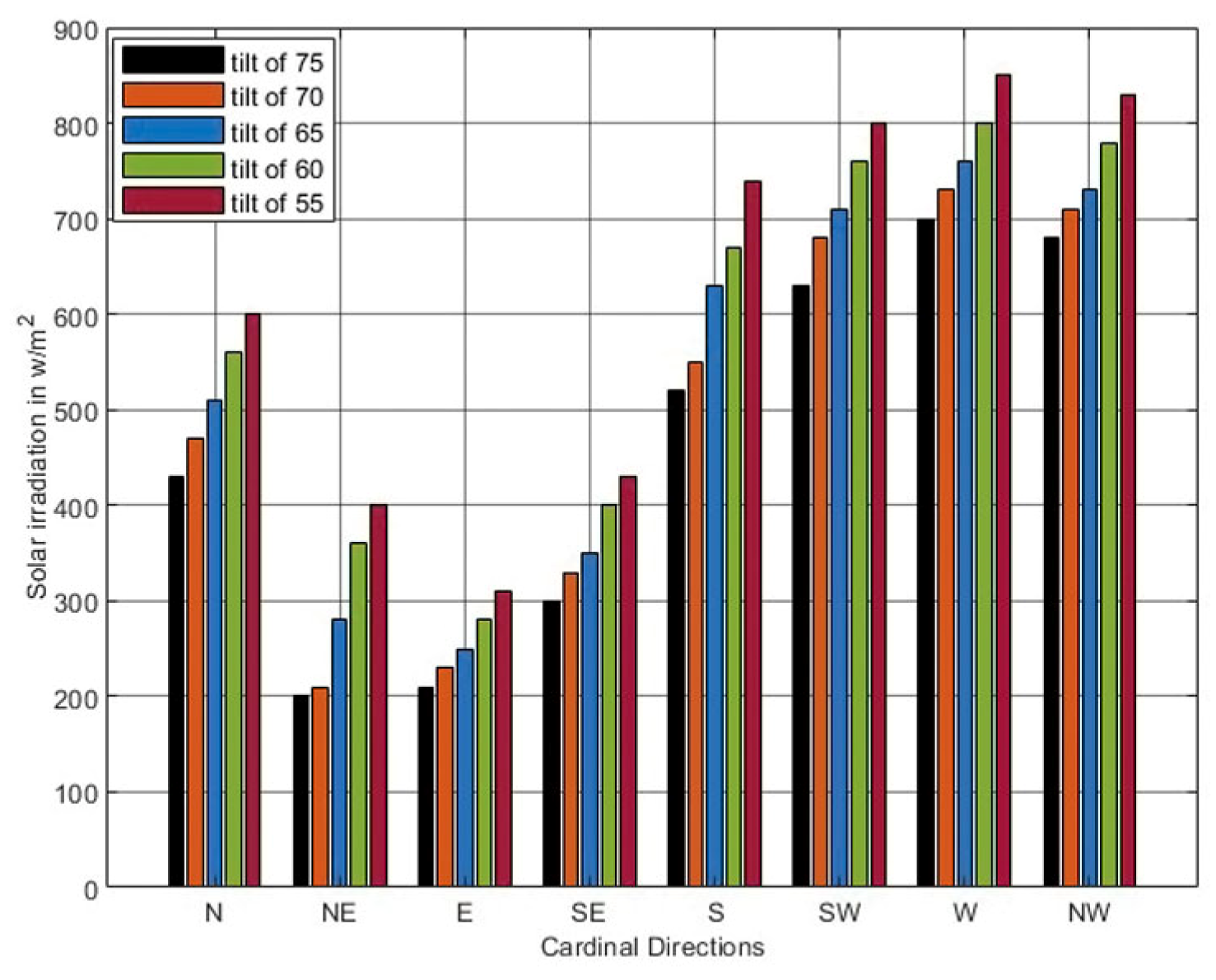

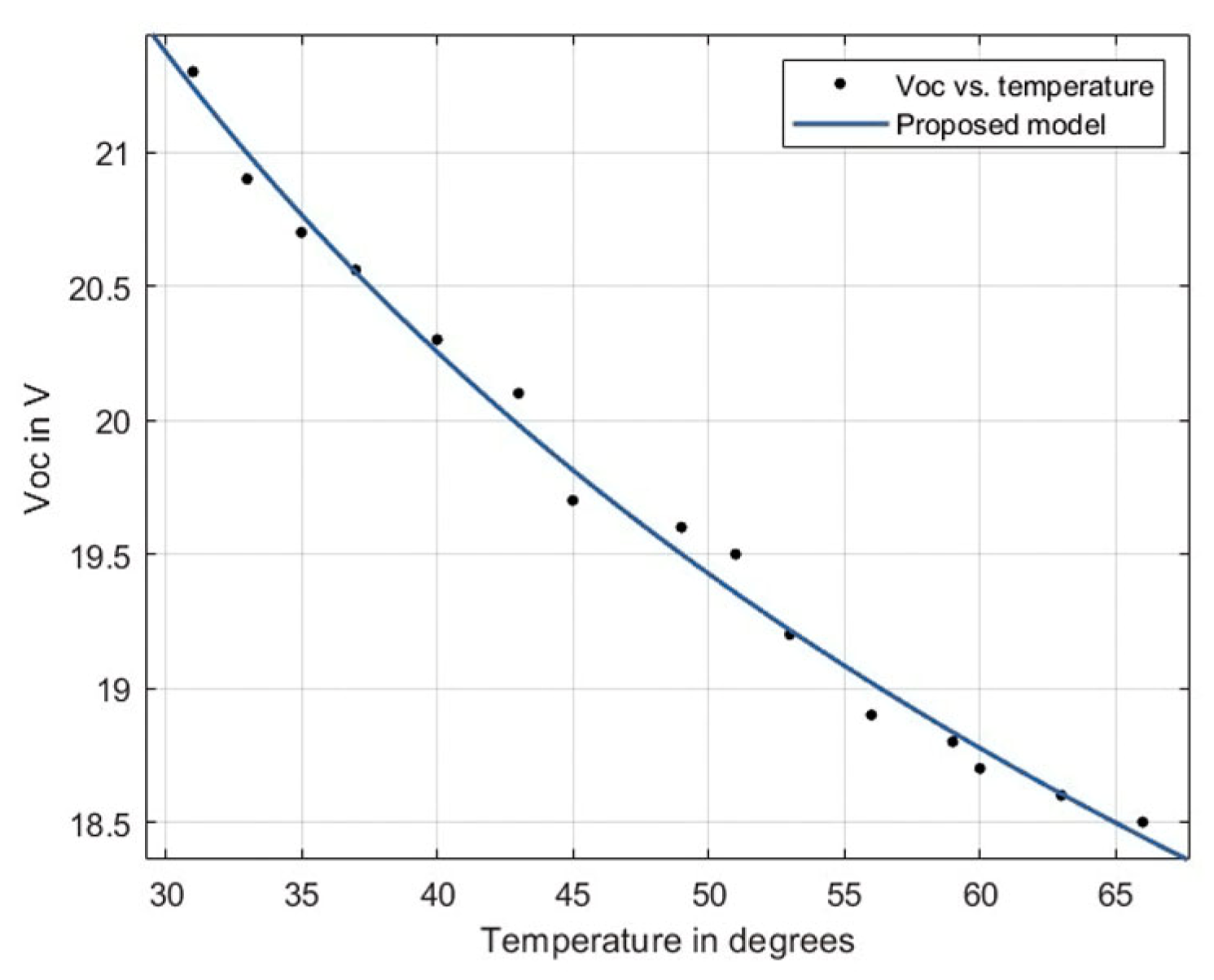
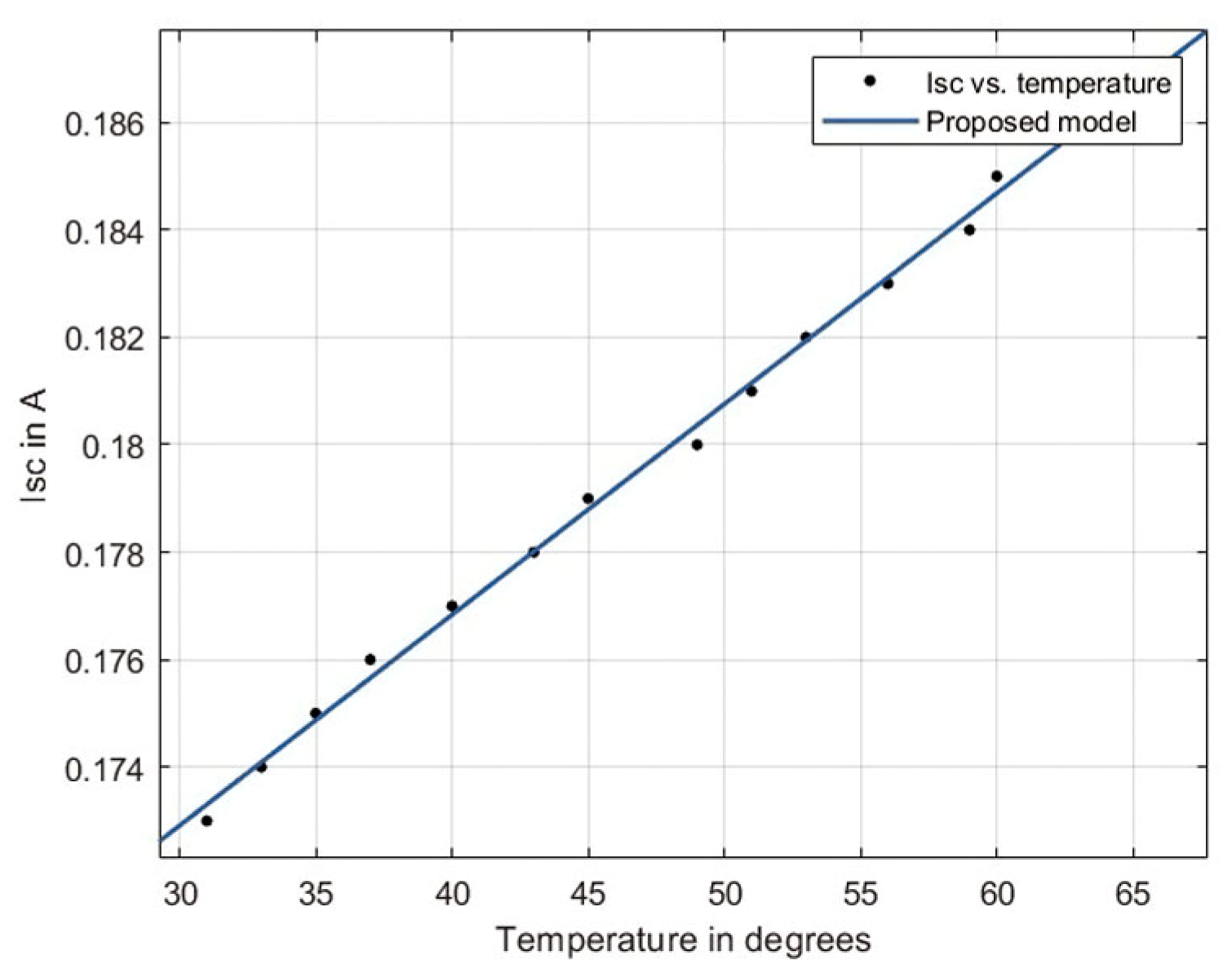
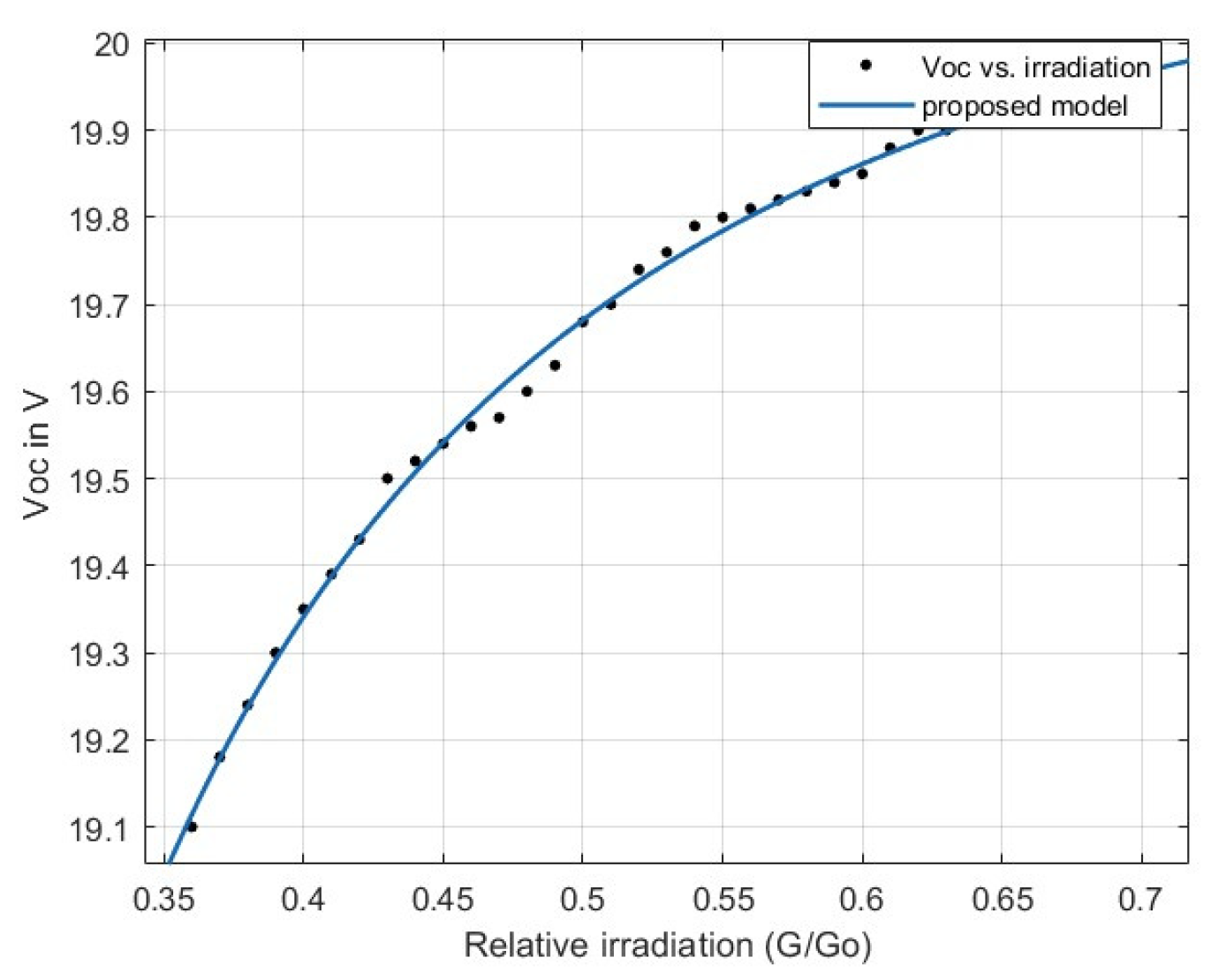
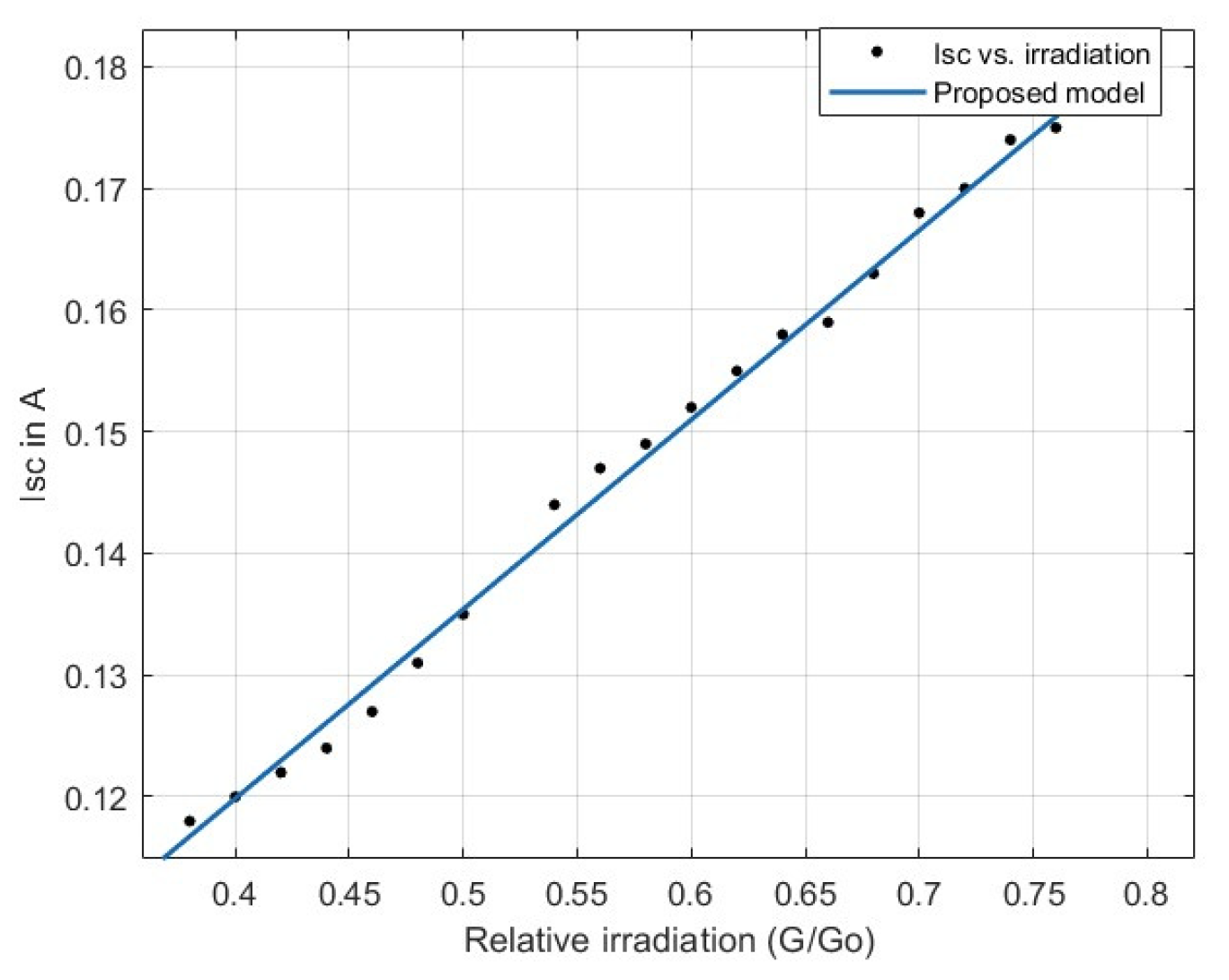
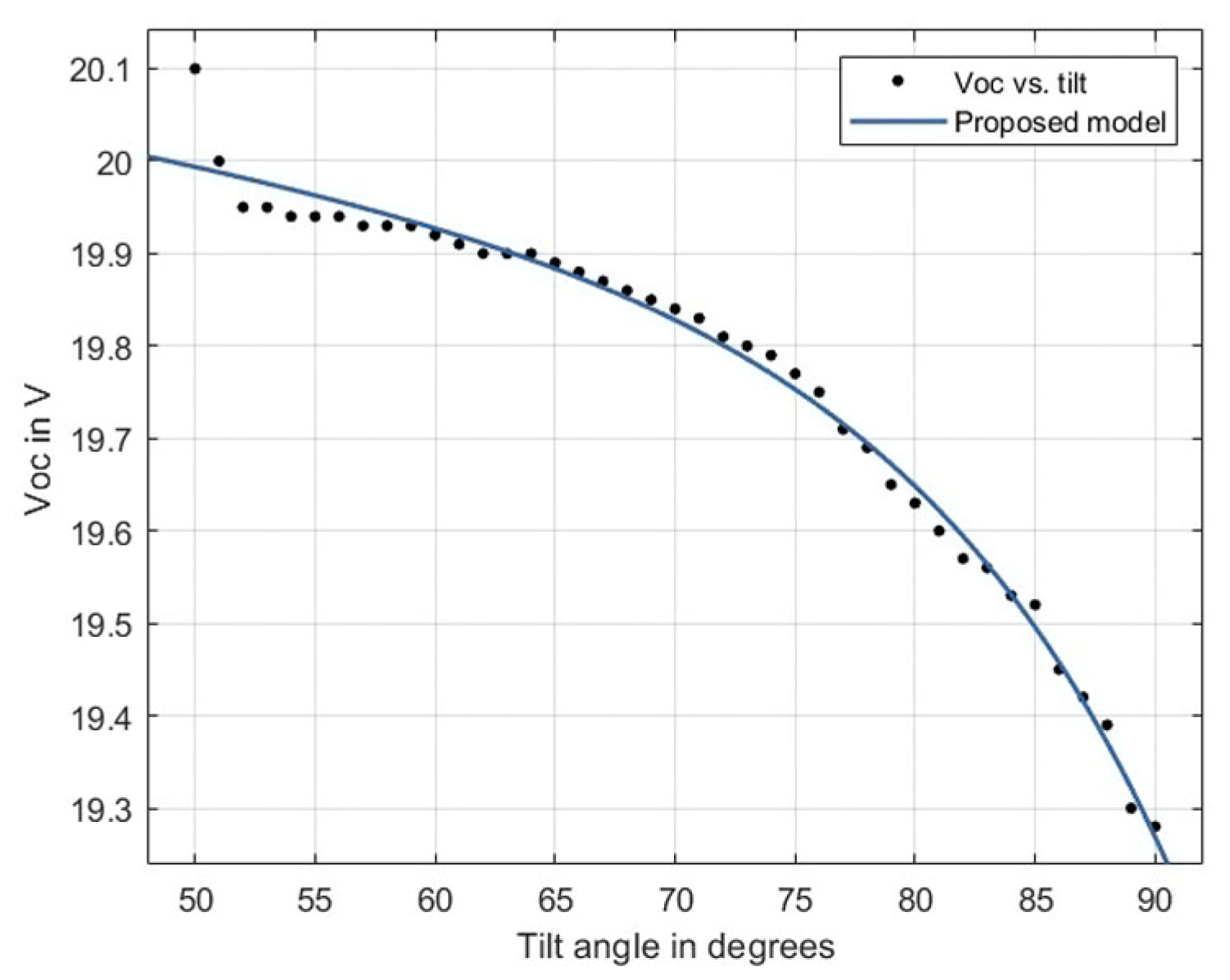
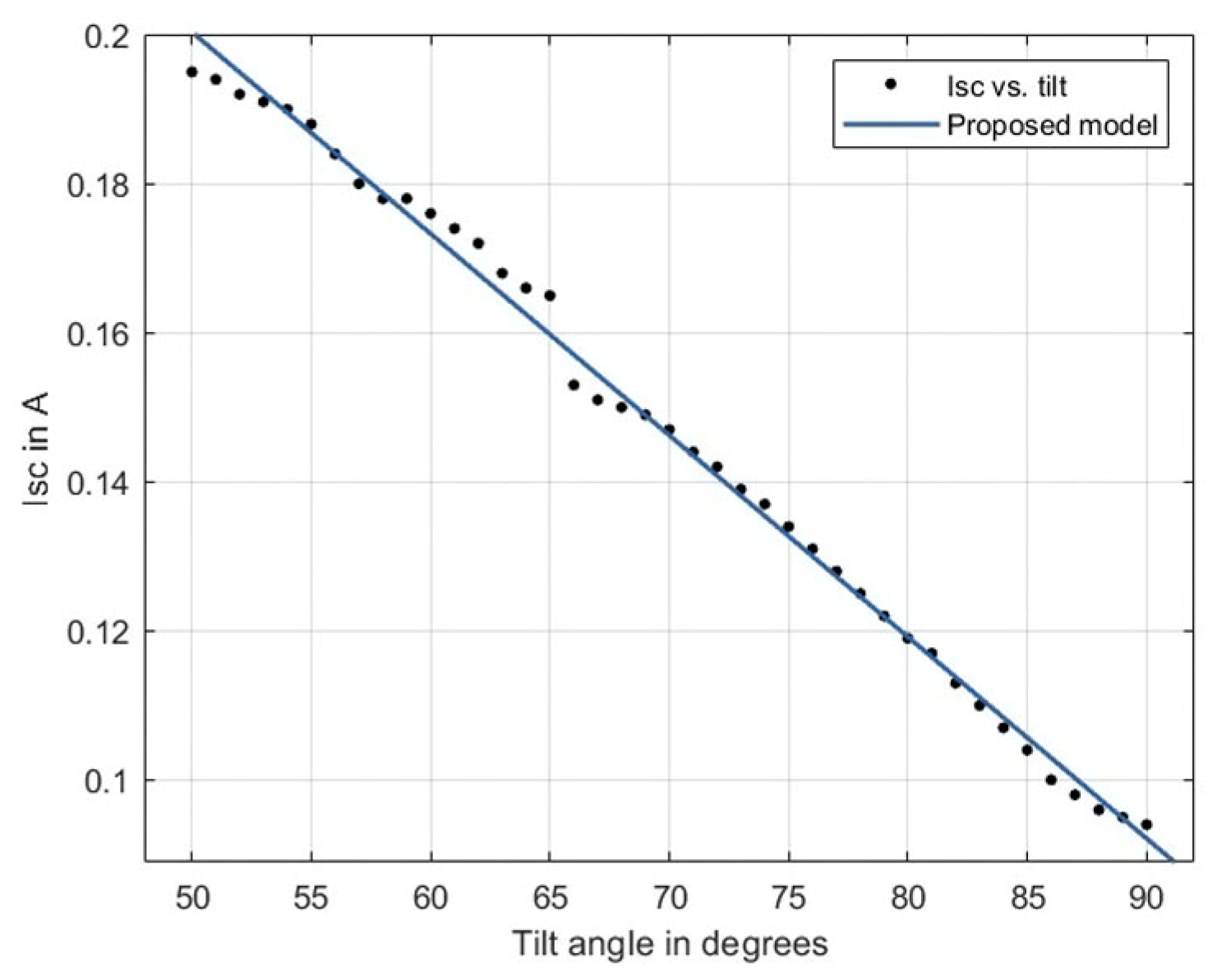
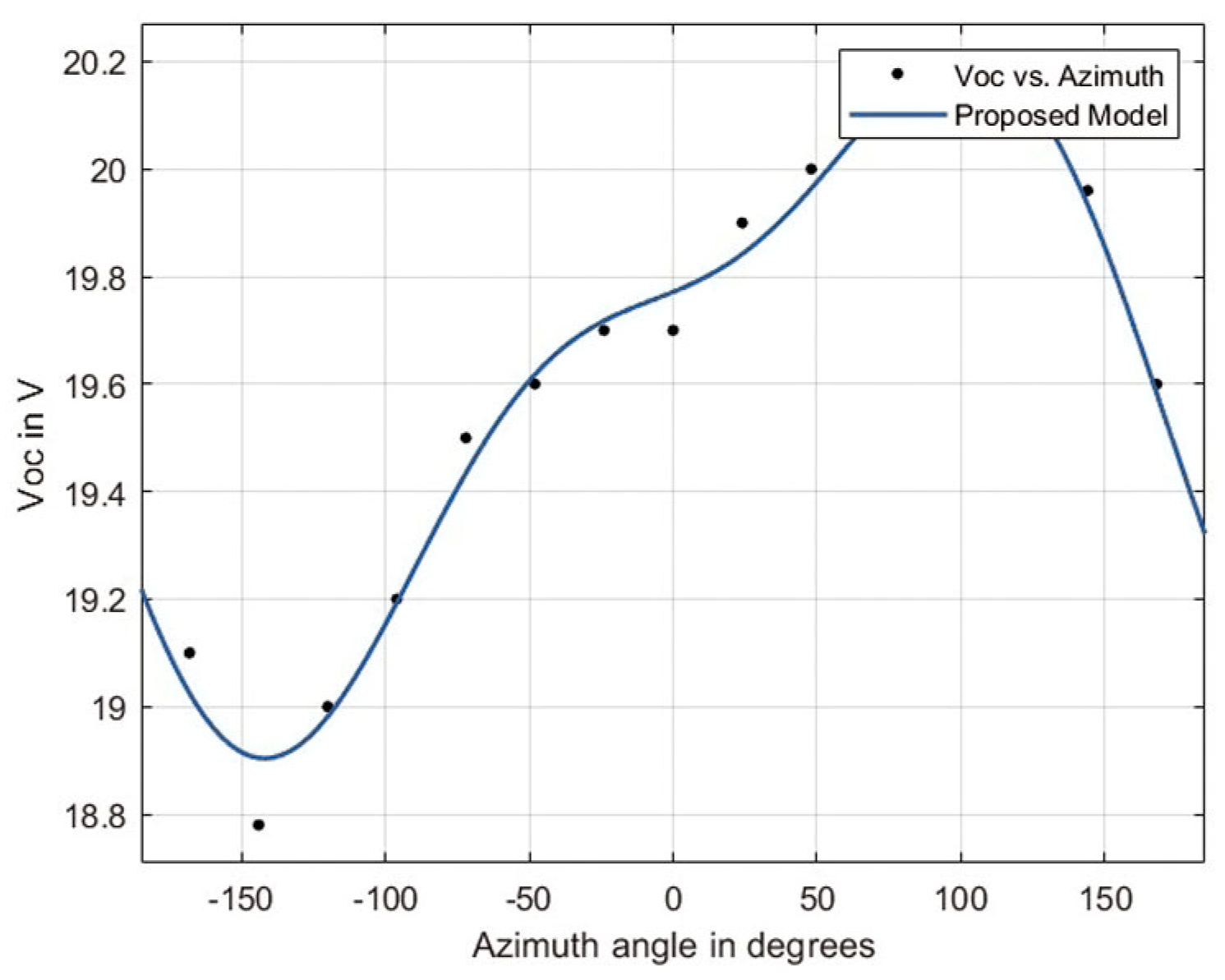
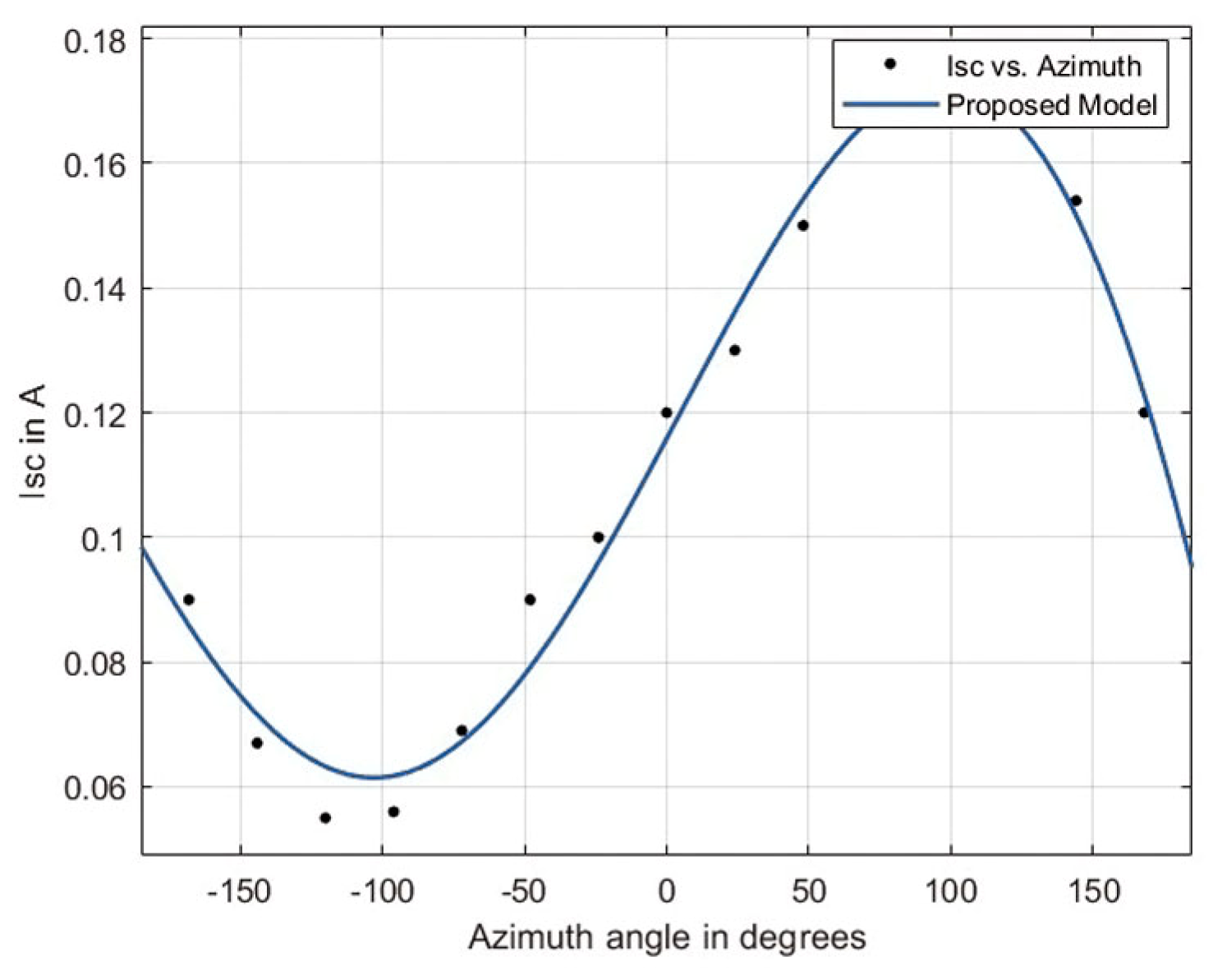
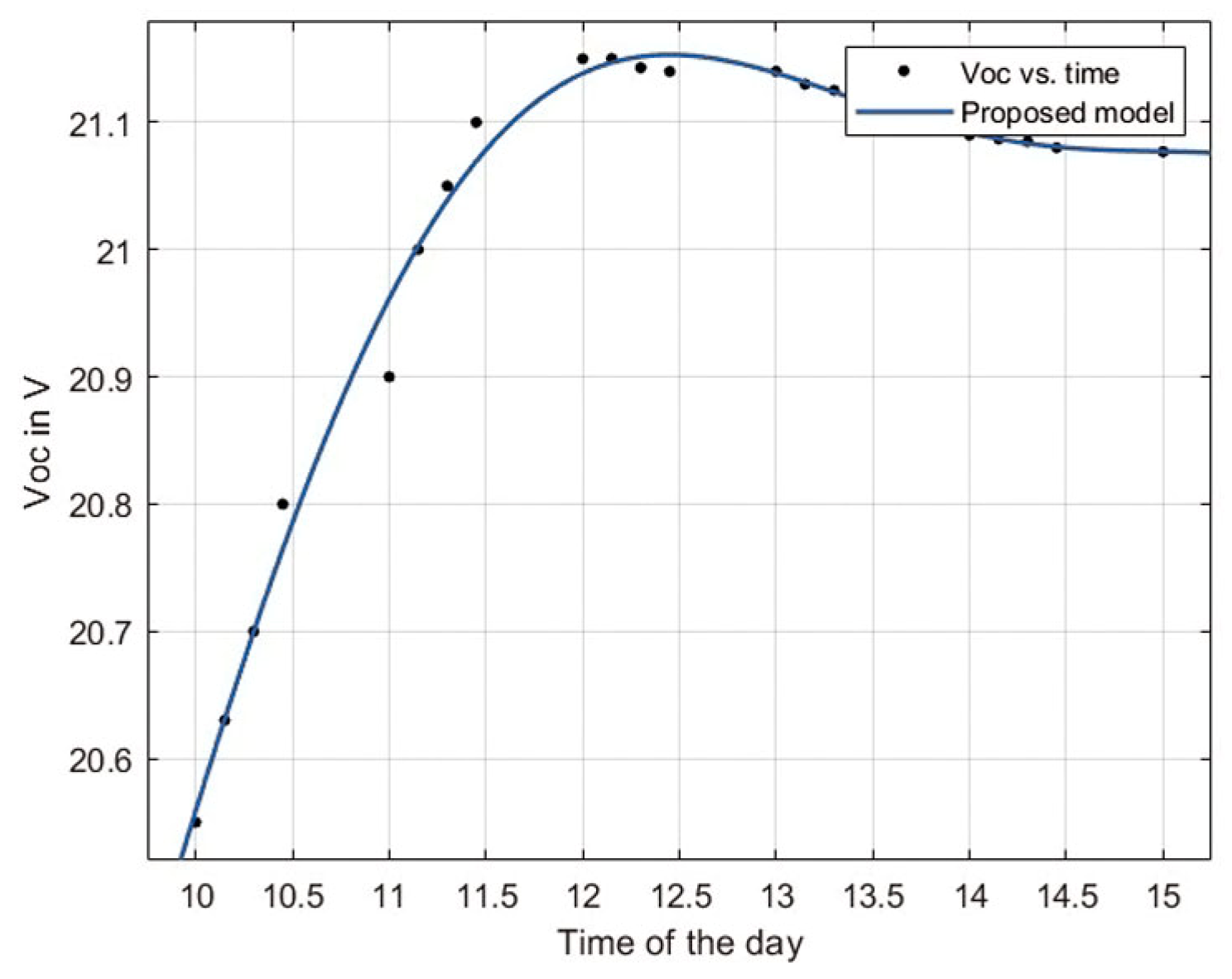
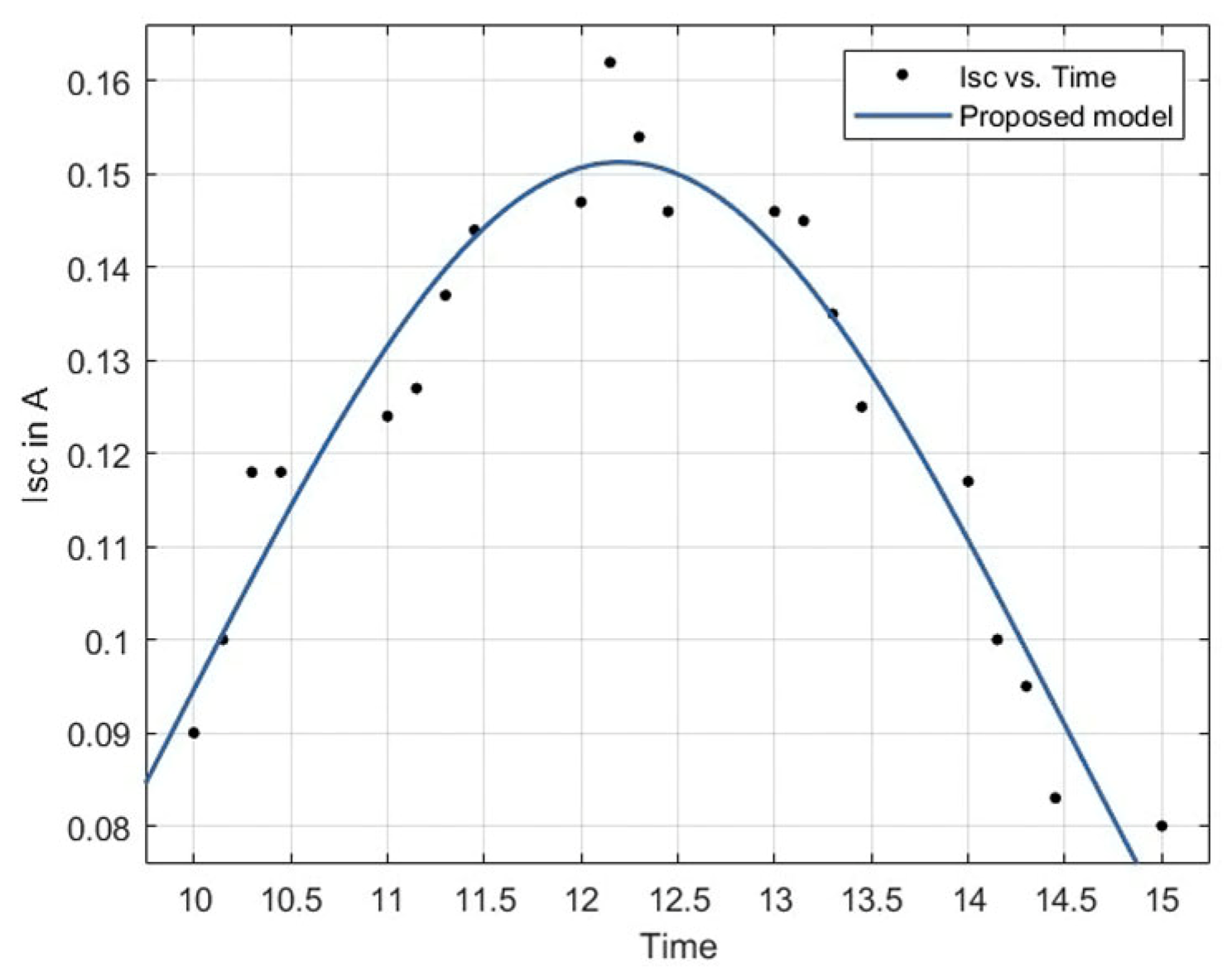
| Specification | Description |
|---|---|
| Solar cell | Monocrystalline silicon cell |
| Dimensions | 750 × 70 × 2 mm |
| ISC | 0.33 A |
| VOC | 24 V |
| Pm | 8 W |
| Efficiency | 19–20% |
Disclaimer/Publisher’s Note: The statements, opinions and data contained in all publications are solely those of the individual author(s) and contributor(s) and not of MDPI and/or the editor(s). MDPI and/or the editor(s) disclaim responsibility for any injury to people or property resulting from any ideas, methods, instructions or products referred to in the content. |
© 2024 by the authors. Licensee MDPI, Basel, Switzerland. This article is an open access article distributed under the terms and conditions of the Creative Commons Attribution (CC BY) license (https://creativecommons.org/licenses/by/4.0/).
Share and Cite
Isaied, M.; Al Tarabsheh, A. The Characterization of Deformable Photovoltaic Modules. Eng. Proc. 2024, 60, 10. https://doi.org/10.3390/engproc2024060010
Isaied M, Al Tarabsheh A. The Characterization of Deformable Photovoltaic Modules. Engineering Proceedings. 2024; 60(1):10. https://doi.org/10.3390/engproc2024060010
Chicago/Turabian StyleIsaied, Mohammad, and Anas Al Tarabsheh. 2024. "The Characterization of Deformable Photovoltaic Modules" Engineering Proceedings 60, no. 1: 10. https://doi.org/10.3390/engproc2024060010
APA StyleIsaied, M., & Al Tarabsheh, A. (2024). The Characterization of Deformable Photovoltaic Modules. Engineering Proceedings, 60(1), 10. https://doi.org/10.3390/engproc2024060010







